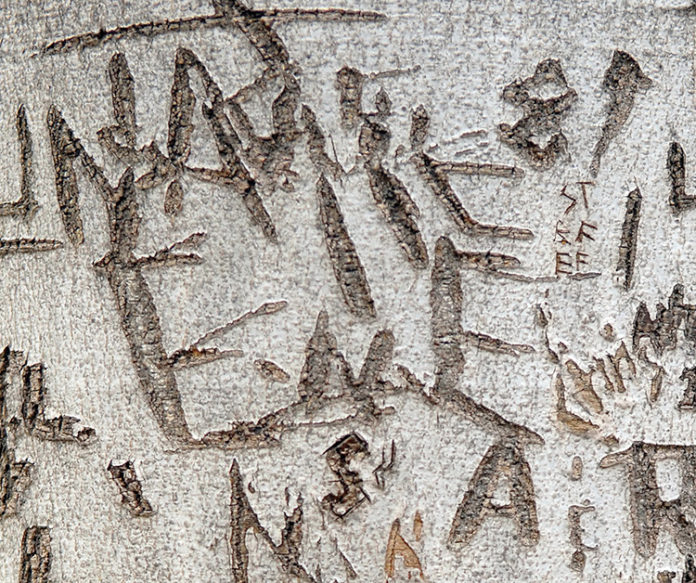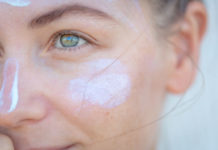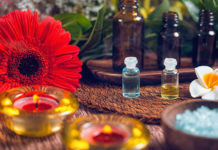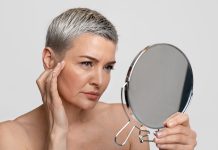
There’s no need to shy away — consider these tips to help you manage stretch marks, keloids and hypertrophic and pitted scars.
by elizabeth cherevaty
Although they may be hard to love, scars are a reflection of the body’s natural healing response to skin injuries. Normally, the microscopic structure of the skin helps organize the regeneration of tissue after a wound. If a wound destroys this structure, a scar is formed while repair cells and structural fibres arrange randomly to patch up the wound — all without considering our esthetics.
For many people, scars can be managed with natural make-up, moisturizers and dietary changes. With that being said, let’s consider the different types and what we can do about each of them. (Of course, always speak to your health care practitioner first if you are considering the following):
Stretch this
“Stretch marks,” or striae, are formed as a response to rapid stretching of the skin, such as pregnancy, puberty or during fast weight gain. These purplish or reddish streaks usually fade to your skin tone after a few years.
Natural Consideration
Applying cocoa butter to the skin is a time-honoured approach to diminish stretch marks. Shea butter has also been used to help fade scars and enhance skin’s suppleness. Organic 100 percent plant butters like cocoa and shea melt readily into the skin to deliver emollients and antioxidants to scarred areas, especially when applied frequently with massage-like strokes to boost circulation.
Raised reasons
Keloids are raised scars that grow beyond the original borders of skin injuries from minor cuts to piercings, especially in people with darker skin tones. Hypertrophic scars are red, raised and can be caused by multiple tension forces on a scar as it’s forming.
Keloids and hypertrophic scars reflect light differently than surrounding skin because of their structure and form. Plus, they may develop lighter or darker pigmentation than surrounding skin.
Natural Consideration
So what can you do to reduce the look of keloids and hypertropic scars? Many people choose surgical removal or even cryotherapy, which is known as freezing therapy that uses liquid nitrogen.
However, you can easily cover up at home. Try dabbing a concealer stick or liquid foundation one to two shades lighter than your normal skin tone onto darker scars (vice versa for lighter scars). (Green-based makeup best neutralizes reddish scars.) Finally, blend a matte, loose powder or spray foundation that matches your skin tone over the scarred and surrounding skin to even out the look. Remember to always apply a natural moisturizer before concealer and foundation to reduce that cakey look.
Improve those pits
Pitted scars, which are associated with acne and chicken pox, reflect the loss of underlying fat or muscle tissue that occurs from inflammation.
Natural Consideration
To improve the appearance of affected skin, try implementing a consistent regime of gentle exfoliation or dry skin brushing, which will help remove dead skin cells.
Also an anti-inflammatory diet rich in fruits and vegetables and low in animal, fried and trans fat could help. Key nutrients for healthy skin include pure water, omega-3 fatty acids, protein, zinc and vitamin A. (However, speak to your doctor first if you are considering supplements as pregnant women are not recommended supplemental vitamin A due to harm on the fetus.)
In general, continue to think anti-inflammatory: try to identify and minimize pro-inflammatory foods in your diet, allergic reactions, as well as hormonal imbalances and stress — including stress on your scars. Realize that scars are seen as demarcations of status or beauty in some cultures — thus, prioritize good health and love your strengths and imperfections alike.
Bonus Tip
Scar tissue may tan or burn to a different degree than surrounding skin, so protecting it daily with SPF 15 will decrease UV-induced highlighting.
References
Abate S (2001). A simplified approach to the treatment of scars with Oriental Medicine. Acupuncture Today 2(11).
Kumar V et al. (2005). Robbins and Cotran pathologic basis of disease 7th ed. Elsevier Saunders: Philadelphia.
Osman H et al. (2000). Cocoa butter lotion for prevention of striae gravidarum: a double-blind, randomised and placebo-controlled trial. BMOG 115(9):1138-42.
Park G et al. (2008). Green tea polyphenol epigallocatechin-3-gallate suppresses collagen production and proliferation in keloid fibroblasts via inhibition of the STAT3-signaling pathway. J Invest Dermatol 128(10):2429-41.
Pizzorno JE and Murray M (2006). Textbook of natural medicine 3rd ed. Elsevier: St. Louis.













